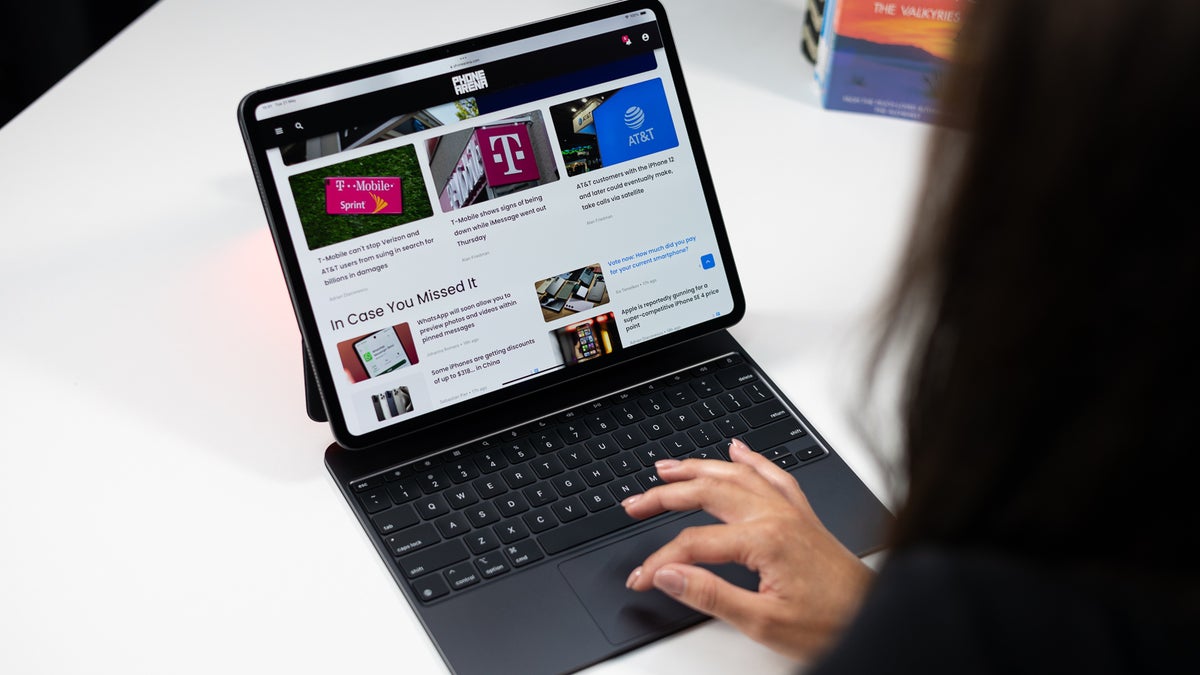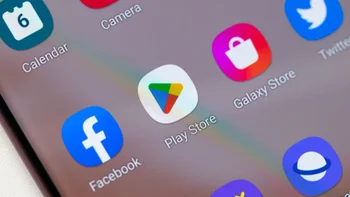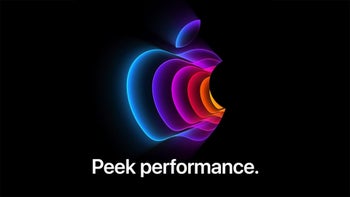Can Apple finally unlock iPad Pro’s full potential: Five iPad OS 18 must-haves

For anyone who knows a thing or two about Apple’s iPad Pro series—especially the more recent models—it is quite clear that the company has been holding back their potential. I am talking about tablets with chipset performance that can rival that of a premium laptop, after all.
This year, Apple made that statement even more true with the release of the absurdly powerful 2024 iPad Pro series, which debuted alongside the brand new M4 chipset, Apple’s latest and greatest silicon. Not to mention that this new iPad Pro M4 generation also comes with an updated Magic Keyboard that, when installed, makes the tablet resemble a MacBook more than ever before.
Despite all of that raw power and potential, however, Apple continues to offer virtually the same software experience via iPadOS, changing things only ever so slightly and slowly to utilize the iPad Pro’s power more effectively. Of course, this is a topic that has long been the subject of discussion and debate among enthusiasts and professionals alike, and it has historically been a rollercoaster of hope and disappointment perpetually on repeat.
But the 2024 WWDC Apple event is coming in hot, and the company has not shied away from hyping it up as one of the most important software-related announcements in its history. Does that mean we can expect iPadOS 18 to be the one to drastically change how we think about an iPad? Well, it’s not clear, but at the very least I am too wary of hoping given what history has shown so far.
Nevertheless, here are 5 ways iPadOS 18 can make the M4 iPad Pro series the one to break the vicious circle of disappointment.
Okay, why not start with something that is a bit more surface level, visual, superficial even. This is an oldie but a goldie, but it is high time we got released from the shackles of the iOS-like pre-determined grid of icons and widgets.
Even something as simple as allowing free control over how you can organize and navigate your home screen would be not only a major visual change for the iPad, but also a very practical one. This can easily be the first step towards a device that is more adaptable and versatile. Apple can even make it so it is a special view that is only available when you have accessories like the new Magic Keyboard connected, making it clear that “now you are in laptop mode.”
For some reason, Apple has copy-pasted the way the Notification and Control Centers look and behave on iOS to MacOS. This is even true in regard to the size both have, despite the fact that you have tons of more space on an iPad. Apple is known for saying that it likes to keep things similar across devices to make things simpler and more familiar for users, but it would be much better if iPadOS handled notifications and simple device controls more like a Mac versus an iPhone.
Size is the main thing to change here. Notifications can take up the whole length of the display (or at least more of it) to reveal more information. The Control Center could also benefit from larger buttons, and maybe even being able to adapt to and change the layout of the buttons depending on the iPad’s orientation (volume and brightness controls could go horizontal, for example).
Listen, you can get used to the way files are distributed on the iPad Pro - if you really try - but the Files app is a far cry from the capabilities of Finder on Mac. As it stands right now, iPad’s Files app resembles more that of an iPhone, which is not the easiest to navigate. In fact, I personally find it quite confusing at times.
In contrast, the Finder app, as the name suggests, makes it easier to find whatever you are looking for by separating your files into different categories/folders by default. You can have a separate space for AirDropped files, applications, things that are already living on your desktop, documents, and so on.
This is probably the most obvious and most requested one ever since laptop-grade chips on iPads became a thing. Of course, such a change would make the iPad Pro a bigger competitor to Apple’s MacBooks. That said, the M4 is a beast of a processor, so it would make perfect sense to make more desktop-level apps.
Apple appears to already be doing something like this with Final Cut Pro and Logic Pro for iPad, so we hope this becomes a trend, and we see more of its apps making use of all the horsepower. Safari is another example: a desktop-like version with plug-in support would be great on an iPad!
Apple has been teasing that this year, as with many other manufacturers, it will be doubling down on generative AI and large language models to elevate the user experience its devices offer. Now, given that the iPad Pro is mostly marketed as a creative powerhouse of a tool, it would make sense to see some AI features that would benefit creatives by making their workflow quicker.
This could come in the form of something like Google’s recently announced DJ Mode in MusicFX, which can come up with a tune based on your instructions. It could also be the classic AI-generated images, or even AI-generated video.
Besides helping out with creativity applications, Apple can also introduce AI tools to aid you in writing text, searching files on your iPad, or proofreading your email. All things that have already been done by the competition, but make so much sense to be available on an iPad.
Let’s be honest, the best way to justify the high price of the M4 iPad Pros would be to bring their capabilities closer to that of a Macbook. But that obviously can’t happen, since… Apple doesn’t want to have its tablets compete with its laptops!
Nevertheless, desktop class apps, a few UI tweaks (and maybe total overhauls in some cases), as well as the new trend of AI-powered features all have the potential of transforming the iPad Pros into the product they were always meant to be — portable beasts that can adapt to user needs.
We don’t have to wait much longer to find out more about the future of the iPad. Apple’s WWDC kicks off on June 10th, and Apple will surely talk about iPadOS and AI. And wewill soon find out whether Apple levels up the iPad or leaves us with yet another generation of powerful hardware and limited software.
But the 2024 WWDC Apple event is coming in hot, and the company has not shied away from hyping it up as one of the most important software-related announcements in its history. Does that mean we can expect iPadOS 18 to be the one to drastically change how we think about an iPad? Well, it’s not clear, but at the very least I am too wary of hoping given what history has shown so far.
1. Complete overhaul of the Homescreen
Okay, why not start with something that is a bit more surface level, visual, superficial even. This is an oldie but a goldie, but it is high time we got released from the shackles of the iOS-like pre-determined grid of icons and widgets.
Even something as simple as allowing free control over how you can organize and navigate your home screen would be not only a major visual change for the iPad, but also a very practical one. This can easily be the first step towards a device that is more adaptable and versatile. Apple can even make it so it is a special view that is only available when you have accessories like the new Magic Keyboard connected, making it clear that “now you are in laptop mode.”
We have different muscle memory for the different devices that we have. Our hands immediately adapt depending on whether we are holding a phone or when we have our hands placed on top of a keyboard. I don’t know about you, though, but when I grab a tablet it always feels a bit… awkward.
2. Optimize Control Center and Notifications
For some reason, Apple has copy-pasted the way the Notification and Control Centers look and behave on iOS to MacOS. This is even true in regard to the size both have, despite the fact that you have tons of more space on an iPad. Apple is known for saying that it likes to keep things similar across devices to make things simpler and more familiar for users, but it would be much better if iPadOS handled notifications and simple device controls more like a Mac versus an iPhone.
Size is the main thing to change here. Notifications can take up the whole length of the display (or at least more of it) to reveal more information. The Control Center could also benefit from larger buttons, and maybe even being able to adapt to and change the layout of the buttons depending on the iPad’s orientation (volume and brightness controls could go horizontal, for example).
3. Replace the Files with Finder
Listen, you can get used to the way files are distributed on the iPad Pro - if you really try - but the Files app is a far cry from the capabilities of Finder on Mac. As it stands right now, iPad’s Files app resembles more that of an iPhone, which is not the easiest to navigate. In fact, I personally find it quite confusing at times.
4. More desktop class apps, please
This is probably the most obvious and most requested one ever since laptop-grade chips on iPads became a thing. Of course, such a change would make the iPad Pro a bigger competitor to Apple’s MacBooks. That said, the M4 is a beast of a processor, so it would make perfect sense to make more desktop-level apps.
Apple appears to already be doing something like this with Final Cut Pro and Logic Pro for iPad, so we hope this becomes a trend, and we see more of its apps making use of all the horsepower. Safari is another example: a desktop-like version with plug-in support would be great on an iPad!
5. A comprehensive AI suite
Apple has been teasing that this year, as with many other manufacturers, it will be doubling down on generative AI and large language models to elevate the user experience its devices offer. Now, given that the iPad Pro is mostly marketed as a creative powerhouse of a tool, it would make sense to see some AI features that would benefit creatives by making their workflow quicker.
Besides helping out with creativity applications, Apple can also introduce AI tools to aid you in writing text, searching files on your iPad, or proofreading your email. All things that have already been done by the competition, but make so much sense to be available on an iPad.
Conclusion
Let’s be honest, the best way to justify the high price of the M4 iPad Pros would be to bring their capabilities closer to that of a Macbook. But that obviously can’t happen, since… Apple doesn’t want to have its tablets compete with its laptops!
Nevertheless, desktop class apps, a few UI tweaks (and maybe total overhauls in some cases), as well as the new trend of AI-powered features all have the potential of transforming the iPad Pros into the product they were always meant to be — portable beasts that can adapt to user needs.
Follow us on Google News













Things that are NOT allowed:
To help keep our community safe and free from spam, we apply temporary limits to newly created accounts: